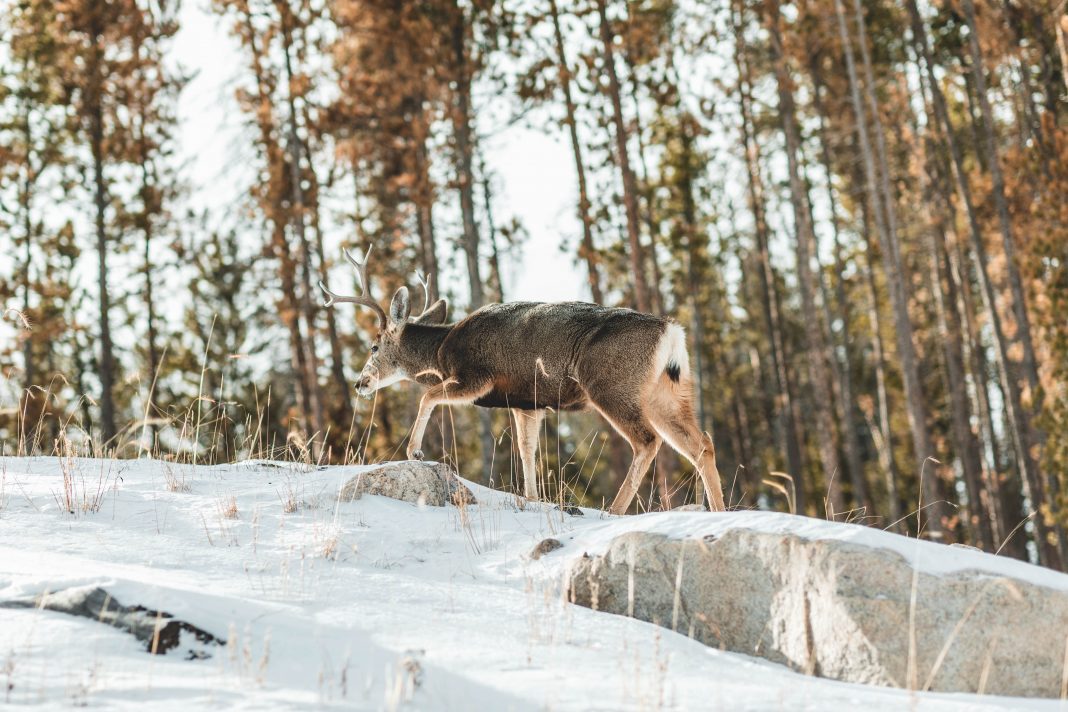FEWER DEER TAGS IN UTAH-
Utah Division of Wildlife biologists have recommended tag decreases for the 2020 season. Under the current mule deer plan, biologists set buck to doe ratios to ensure healthy herds continue to grow. For example, on 18 general season units, the buck to doe ratio is 18-20 bucks for every 100 does. Similarly, the other 11 units use 15-17 bucks for every 100 does ratio. Biologists feel like a tag reduction is needed. That way they can effectively meet these objectives. Consequently, they would like to see a decrease of 9,175 permits. Which means they are asking for a 10% decrease of total tag numbers from the 2019’s season.
“In 2019, the statewide deer population estimate decreased by approximately 51,000 animals to a total of just over 321,000 deer,” DWR Big Game Coordinator Covy Jones said. “This decrease was primarily due to drought conditions in the spring, summer and fall of 2018, followed by a heavy winter in 2019. Deer populations in areas of the southern, southeastern, northeastern and northern parts of the state showed the most loss.”
Tag Decrease Breakdown by Unit
Tag decreases will be broken down by unit below. Some units had no decreases, they will be noted in bold lettering. Subsequently, units that have been struggling with buck to doe ratios will see decreases.
- Box Elder decreases from 4200 -> 3700 tags.
- Cache decreases from 6600 -> 5800 tags.
- Chalk Creek decreases from 9000 -> 8100 tags.
- Kamas decreases from 3800 -> 3300 tags.
- Ogden decreases from 2500 -> 2300 tags..
- Oquirrh-Stansbury decreases from 3200 -> 2000 tags.
- Beaver decreases from 3000 -> 2100 tags.
- Fillmore decreases from 2250 -> 1200 tags.
- Monroe decreases from 1100 -> 900 tags.
- Mount Dutton decreases from 675 -> 550 tags.
- Panguitch Lake decreases from 2800 -> 2200 tags.
- Boulder Mountain decreases from 1700 -> 1200 tags.
- Fish Lake decreases from 1100 -> 950 tags.
- Thousand Lakes decreases from 300 -> 250 tags.
- The La Sal Mountains decreases from 1600 -> 1300 tags.
- San Juan, Abajo Mountains decreases from 2750 -> 2200 tags.
- North Slope decreases from 3100 -> 2800 tags.
- South Slope, Bonanza decreases from 1675 -> 1500 tags.
- South Slope, Yellowstone decreases from 1750 -> 1575 tags.
- Central Mountains, Nebo stays at 4100 tags.
- Central Mountains, Manti stays at 8100 tags.
- Wasatch West stays at 8100 tags.
- Wasatch East stays at 4250 tags.
- West Desert-Tintic stays at 900 tags.
- West Desert-West stays at 600 tags.
- Southwest Desert stays at 800 tags.
- Nine Mile stays at 1650 tags.
- Pine Valley stays at 4500 tags.
- Zion stays at 3800 tags.
Most of the units with proposed decreases also saw lower than normal fawn recruitment in 2019. In 2018 Utah had a drought in the summer and fall months. The drought was followed by a hard winter with heavier than normal snowfall. With all these issues happening within a year, you can see why they want fewer deer tags in Utah. What are your thoughts? let us know in the comments.
Update 5/4/2020
The Utah DWR has officially released the tag numbers for the 2020 general season mule deer hunts. The total number general season tags will be 79,675. This is a significant decrease from the 2019 season. To be exact, it is a decrease of 10,225 permits. The decrease in tag numbers will affect nineteen of the twenty-nine general season GMUs. All of the other units will see no change.















